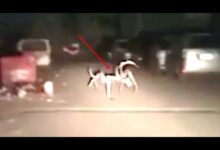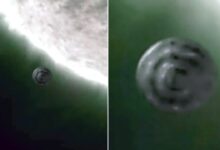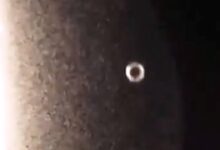What Voyager Detected at the Edge of the Solar System That Shocks NASA
Voyager 1: The Spacecraft That Refused to Die
For more than four decades, Voyager 1 has remained humanity’s most distant messenger—just a lonely speck of metal drifting in the silent darkness beyond the planets. In late 2023, NASA revealed a stunning announcement: after months of chaotic signals and silence, Voyager 1—the farthest man-made object in existence—had once again sent clear data back to Earth.
But what if the edge of the solar system is not an ending at all, but the beginning of something far stranger?
A Signal From the Void
The trouble began when Voyager 1’s transmissions turned to noise. For weeks, the data streams arrived as scrambled bits—like a language no one could understand. At first, NASA thought it was simply hardware degradation. But then the real cause emerged: the memory of its Flight Data Subsystem—the tiny computer responsible for formatting and transmitting information—had failed.
A single cosmic ray, moving near the speed of light, had pierced a chip no larger than a fingernail, flipping memory bits and scrambling the spacecraft’s “brain.”
Voyager was still alive, still sending signals. But it had lost the “language” needed to talk to Earth.
The Impossible Surgery
Restoring Voyager meant attempting the impossible: reprogramming a 1970s spacecraft drifting 24 billion kilometers away.
Voyager 1’s brain has less than 70 KB of memory—smaller than a single email. No backups. No self-healing AI. Just one fragile system, aging and alone in interstellar space.
Each command from Earth takes 22 hours to reach the probe, and another 22 hours for its reply. Every line of code had to be written by hand, converted into raw binary, and “implanted” into whatever memory blocks still worked. One small error could have turned Voyager into a lifeless husk forever.
After weeks of failure, silence, and retries… at last, a clean signal returned. Voyager 1 had awakened.
A Mission With No Ending
Voyager 1 was never meant to live beyond five years. Launched in 1977 during a rare 176-year planetary alignment, its job was simple: fly past Jupiter and Saturn.
But what it revealed changed science forever:
-
Jupiter (1979): intense radiation belts, faint rings, and volcanoes erupting on Io.
-
Saturn (1980): complex braided rings and Titan’s thick, orange atmosphere, reminiscent of early Earth.
-
Uranus & Neptune (Voyager 2): a planet tipped on its side with a twisted magnetic field; a world of supersonic winds and Triton’s geysers of nitrogen.
These weren’t just images—they were revolutions.
Stepping Beyond the Edge
By the 1990s, Voyager had no more planets to visit. It simply kept flying. Eventually, it reached the heliopause—the place where the Sun’s solar wind fades and interstellar winds begin.
-
2012: Voyager 1 crossed the boundary, becoming the first human-made object to enter interstellar space.
-
2018: Voyager 2 followed, but its readings were radically different. Voyager 1 recorded plasma compressed like invisible walls, while Voyager 2 drifted through a stretched-out flow spanning hundreds of millions of kilometers.
The edge of the solar system wasn’t quiet at all. It was wrinkled, turbulent, hot, alive.
A Symphony for the Cosmos
Before leaving, Voyager carried a strange gift: the Golden Record. Conceived by Carl Sagan, the 12-inch disc contains greetings in 55 languages, the sounds of thunder and birdsong, a human heartbeat, and music from Bach to Chuck Berry.
The chance of anyone ever finding it is nearly zero. But that was never the point. The Golden Record is a gesture—a whisper into the void:
“We were here. We wanted to be known.”
The Final Drift
Today, Voyagers 1 and 2 still sail silently onward. Their nuclear power is fading; their instruments are being shut down one by one. By the 2030s, their voices will fall silent.
And yet, even in silence, they will continue their journey—through stars and dust, for millions of years—carrying Earth’s story with them.
Voyager was never built to last forever. But it has proven that sometimes, the greatest journeys begin where we once thought everything had ended.




